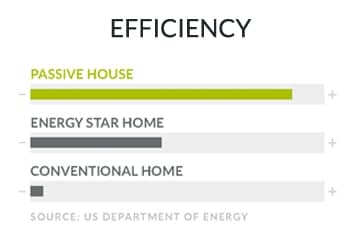
High performance building can revolutionize the energy efficiency of buildings. Passive buildings routinely achieve 90% reductions in heating energy use compared to conventional buildings, and similar reductions in cooling energy. When combined with day lighting, heat pumps for HVAC and domestic hot water, and superefficient appliances and fixtures, total energy use in high performance buildings can readily hit 75% less than that of conventional buildings.
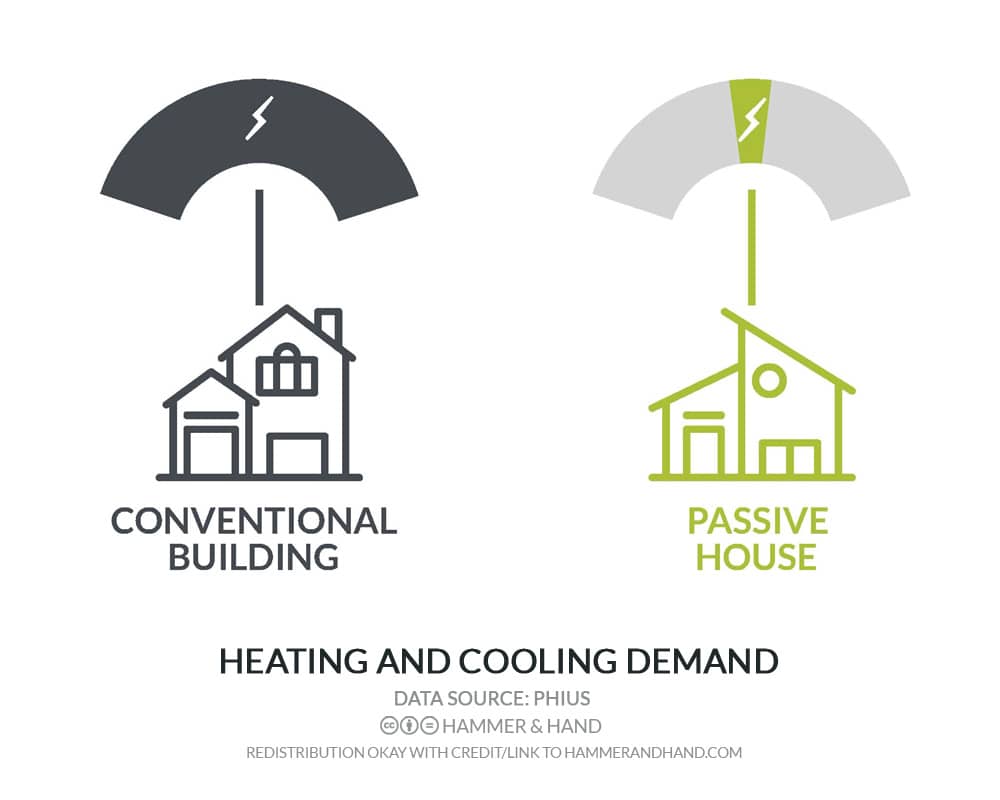
For example, the Bullitt Center, the noted Living Building and location of Hammer & Hand’s Seattle office, has taken building energy efficiency to new heights. Its energy use intensity (EUI) of just 12.3 kBTU/sf/year is 83% lower than that of an average office building in Seattle (72 kBTU/sf/year). Importantly, this energy efficiency does not depend on hair shirts or other sacrifices; the Bullitt Center delivers all the comfort and health benefits that we expect of high performance buildings. H&H’s office is a gracious, light-filled space equipped with a full suite of office components. The building and its systems are simply designed for excellent energy performance.
High performance buildings achieve these levels of energy efficiency by focusing first on the envelope. Advanced building envelopes push down heating and cooling demand to very low levels. Super-efficient heat pump technology then meets those micro-loads. Heat recovery (or energy recovery) ventilation maintains thermal energy inside the envelope as it refreshes air inside.
It all starts with airtight construction. When air moves, heat moves with it, so by eliminating air leaks through walls, foundation, and roof, airtight construction eliminates a major source of energy loss.
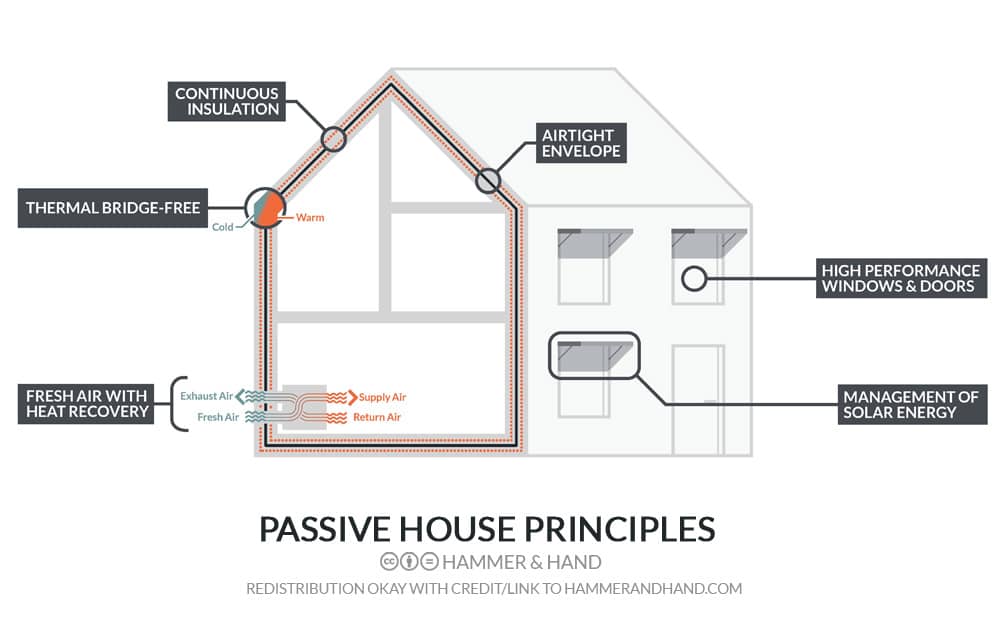
The next step is to super-insulate building envelopes to isolate, or “thermally break,” inside from outside. This begins with a thick layer of interior insulation in the building envelope, followed by a monolithic layer of exterior insulation to create a continuous wrap around the building.
Key to the integrity of this “thermal envelope” is the elimination or mitigation of any thermal bridges, or building elements that cut across and bypass a building’s insulation. Because heat energy is so good at finding the path of least resistance between inside and outside, thermal bridges can rob buildings of lots of energy. A thermal bridge across an otherwise high performance wall will short-circuit our best-laid plans; the heat will treat that thermal bridge like a superhighway for energy transfer, bypassing the wall’s insulation. The wall’s overall capacity to insulate will plummet. Careful detailing of assemblies to avoid these energy-sucking thermal bridges allows high performance buildings to maximize thermal performance. And that final wrap of continuous exterior insulation finishes the job of thermally breaking the building from the outside environment.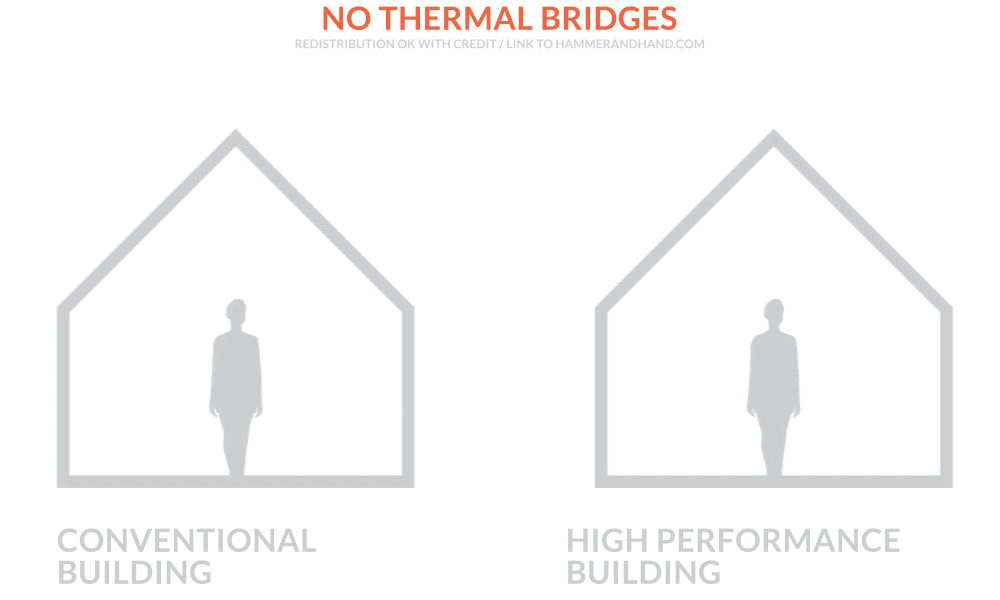
High quality windows and doors are also key to high performance building. If you picture the super-insulated, thermal bridge-free envelope of a high performance building as the hull of a ship, each window and door is like a big hole in that hull. We need to carefully address these weak points to ensure they maintain the integrity of the building’s air and thermal barriers. This means using triple pane high performance windows and super-insulated, triple-gasketed high performance doors. It also means expert installation of each window and door, with careful detailing so that the airtight layer and thermal envelope both transition unbroken from wall assembly to window or door and back again.
Contrary to the myth that high performance buildings have to be windowless shoe boxes, glazing can be a Passive House building’s best friend. High quality windows can be “energy positive,” meaning that the energy gains that come in through them as day lighting and passive solar heat gain can more than offset any heat that escapes out through them. Done right, generous glazing helps passive buildings perform well.
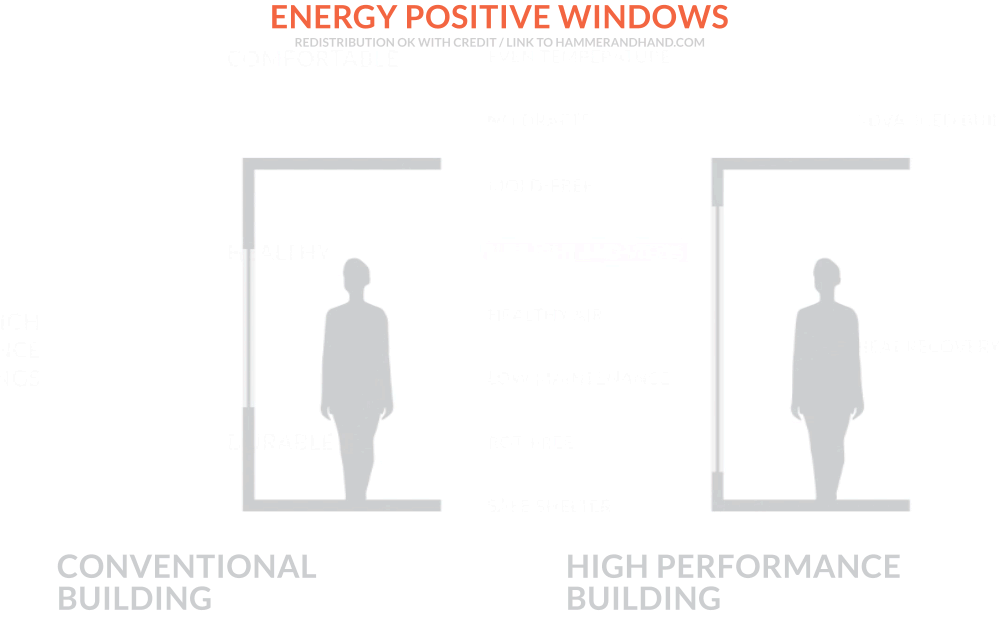
Generous use of “energy positive” glazing does raise the possibility of overheating when outside temperatures are mild or warm. So we commonly shade windows on high performance buildings, both with exterior overhangs and with operable exterior shades. We can then manage passive solar energy effectively, capturing it when the building needs it and shielding from it when the building does not.
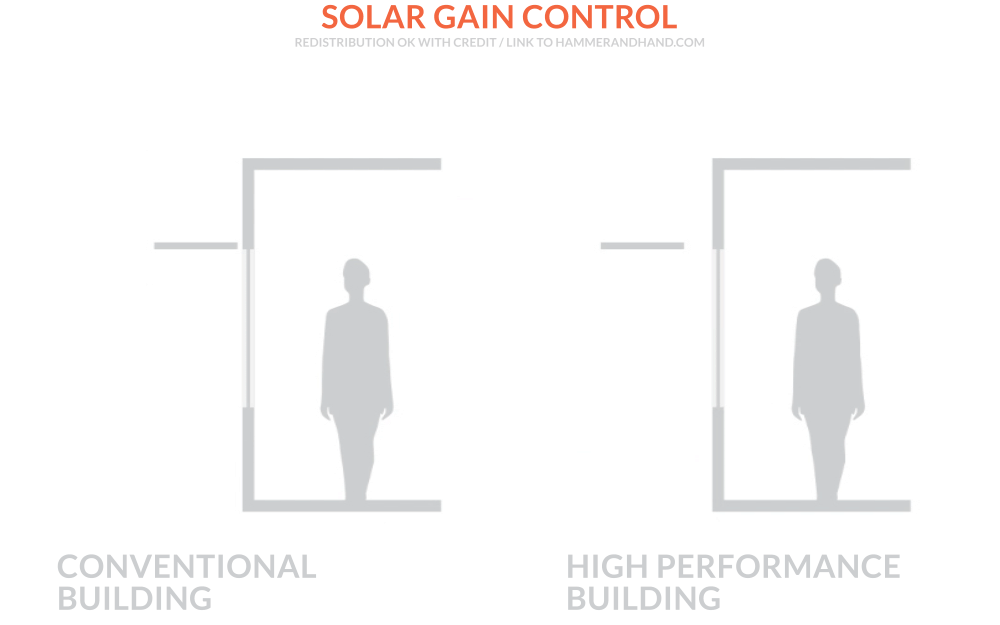
With the performance of the envelope (walls, foundation, roof, and fenestration) optimized, energy demand for heating drops by as much as 90%. To meet these micro heating and cooling loads we draw on super-efficient heat pump technology like air to air and air-to-water heat pumps. Heat pumps can also deliver domestic hot water super-efficiently. (Energy efficiency in other appliances is simply a matter of some smart shopping.)
The final piece of the super-efficiency puzzle is to bring in fresh air and exhaust stale air without venting the building’s precious interior thermal energy. Heat recovery ventilation (HRV) technology does this beautifully. (Note: energy recovery ventilation, or ERV, is closely related to heat recovery, but manages humidity in addition to “sensible” heat.) At the core of most of these HRVs is a honeycomb-like heat exchanger that creates a very large surface area across which thermal energy from the exhaust stream of the stale interior air transfers to the incoming stream of fresh outside air, without the two streams ever mixing. HRVs infuse buildings with a continuous supply of filtered fresh air while conserving interior thermal energy.
(Note: super-efficient appliances are an important piece of the high performance building puzzle, too. The solution is straightforward: go shopping.)
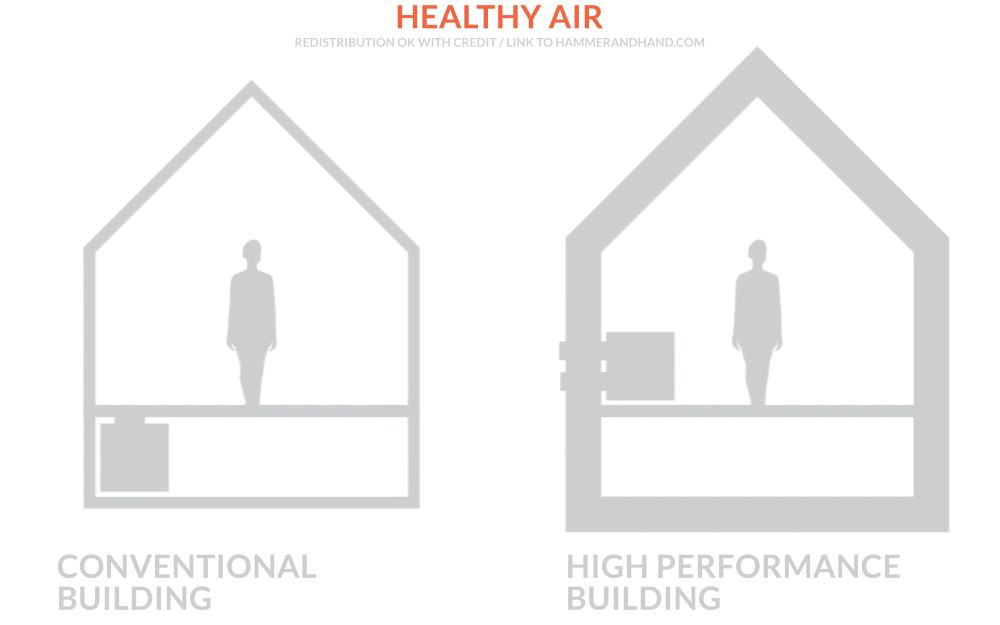
Drawing on the techniques above, high performance building has transformed what is possible in building energy efficiency today. The Passive House approach to building is at the leading edge of this movement, and charts a field-tested path not only to ultra-low energy use in buildings, but also superior comfort, health, and building durability.
